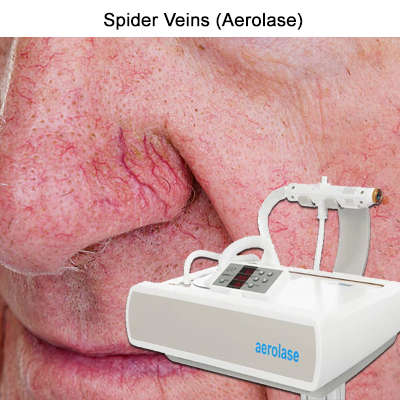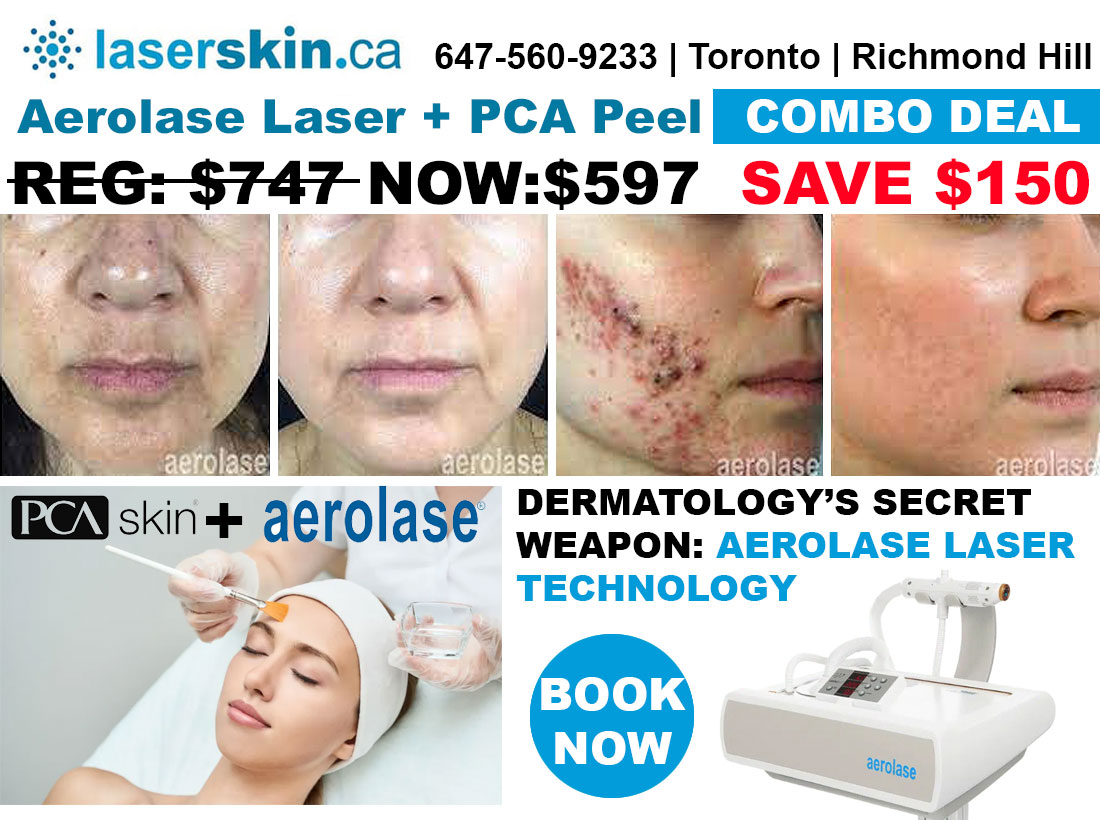
Book Your Free Consultation Today Or Call (647) 560-9233
By providing your phone number you agree to receive informational text messages from laserskin.ca. Consent is not a condition of purchase. Message frequency will vary. Msg & data rates may apply. Reply HELP for help or STOP to cancel.
SPIDER VEIN REMOVAL COST (TELANGIECTASIAS)
Telangiectasias are visible, widened blood vessels on the skin, commonly referred to as spider veins. They become more common as people age, with an estimated 30%-60% of adults having them.
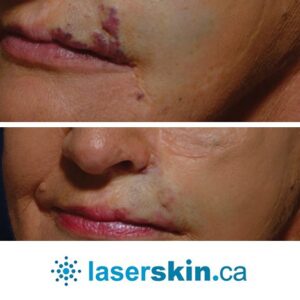

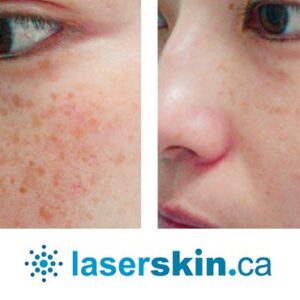
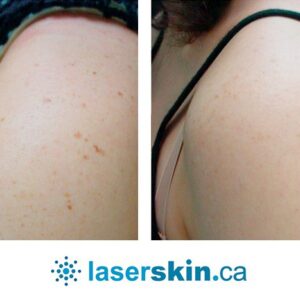
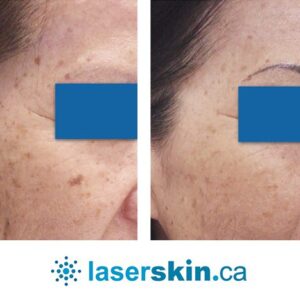
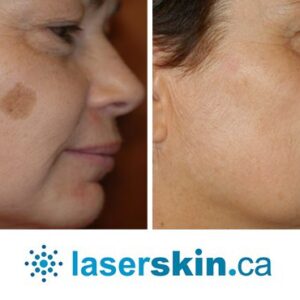
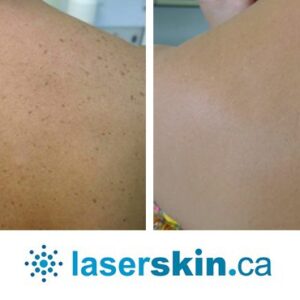

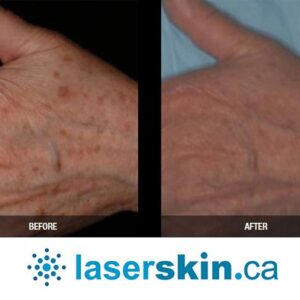
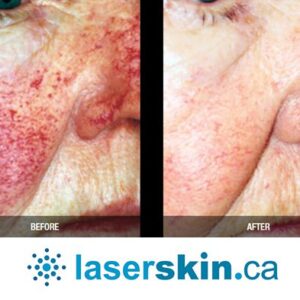
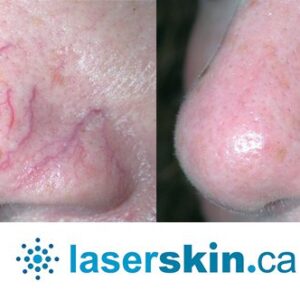
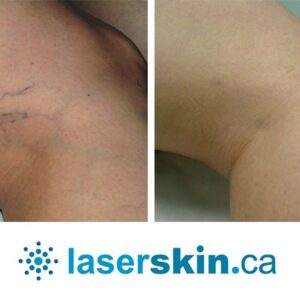
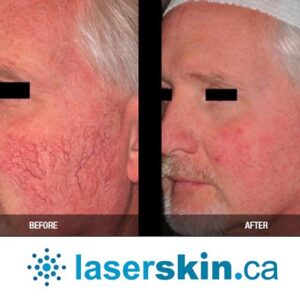
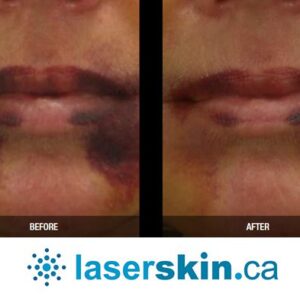
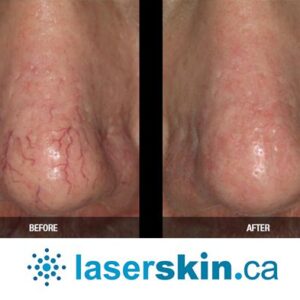
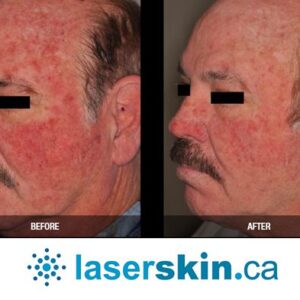


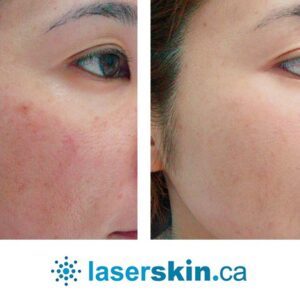
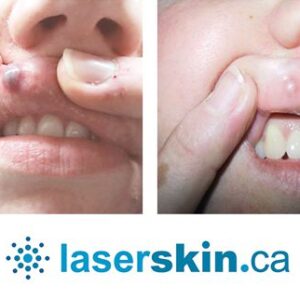
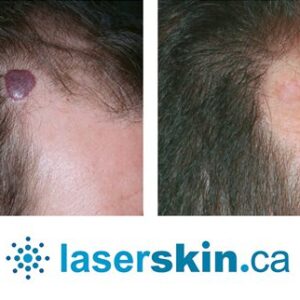
Telangiectasis
Spider veins, also known as Telangiectasis, are small, damaged veins that can occur on the legs or face. They are rarely uncomfortable or damaging, but some people may choose to treat them for cosmetic reasons.
Spider veins can be blue, purple, or red and can take the form of thin lines, webs, or branches. They’re sometimes known as “spider veins” because of their fine and weblike appearance. They are also known as thread veins by some people.
Telangiectasis are widespread in high-traffic locations (such as the lips, nose, eyes, fingers, and cheeks). They can cause discomfort and are unappealing to some people. Many people opt to have them taken out.
The vessel is removed by inflicting harm to it and pushing it to collapse or scar. This decreases the visibility of red marks or patterns on the skin.
While telangiectasia is normally harmless, it might be an indication of a serious condition. Hereditary hemorrhagic telangiectasia (HHT), for example, is a rare genetic disorder that creates life-threatening telangiectasia. HHT-induced telangiectasia develop in critical organs such as the liver rather than the skin. They may explode, resulting in extensive bleeding (hemorrhages).
SYMPTOMS OF SPIDER VEINS (Telangiectasia)
- pain (related to pressure on venules)
- itching
- threadlike red marks or patterns on the skin
- frequent nosebleeds
- port-wine stain birthmark
- shortness of breath
- seizures
- small strokes
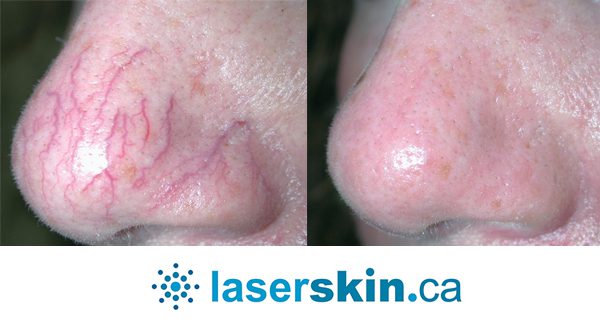
TORONTO LASER TREATMENT FOR SPIDER VEINS
Laser treatment can be highly efficient in reducing the look of telangiectasia. Laser therapy is the most effective treatment for facial telangiectasia and broken capillaries since it is less invasive. It is frequently used to treat the face and neck, but it can also be used to treat other regions of the body. The laser targets the red blood cells in the vessel and induces thermal injury in the microscopic skin blood vessels, resulting in the sealing of the enlarged blood channels. This technique is not painful and has a quick recovery time.
How Does Laser Treatment Work?
Laser system uses a cooled hand-piece and a variety of energy levels to naturally remove visible spider and varicose veins. The process is non-invasive and leaves no scars because laser energy is used. During the first two days after the operation, you should expect some redness in the treated area. You may notice symptoms of improvement as soon as two weeks. If the veins resurface, you may require a follow-up treatment to permanently remove them.
What are the causes of Telangiectasia?
Telangiectasia’s actual cause is unknown. Several factors, according to researchers, may lead to the formation of telangiectasia. These factors could be hereditary, environmental, or a combination. Most occurrences of telangiectasia are thought to be caused by long-term sun exposure or severe temperatures. This is because they typically form on the body, where the skin is frequently exposed to sunlight and air.
Other plausible explanations include the following:
- Genetics\Aging
- Exposure to the sun and wind
- Blood vessel dilation medications
- Pregnancy or the pill as a method of contraception
- Dermatological trauma
- Incisions made during surgery
- Rosacea
- Acne
- Prolonged usage of corticosteroids, either orally or topically
Q & A for Telangiectasia
What is Telangiectasia?
The medical condition telangiectasia is characterized by the appearance of minute, dilated blood vessels near the skin’s surface. Blood vessels can form patterns resembling spider webs or tree branches, and are typically red or purple in colour.
What causes Telangiectasia?
Several factors, including genetics, radiation damage, ageing, rosacea, hormonal changes, and certain medications, can cause telangiectasia. The condition is more prevalent in those with fair skin, and it affects women more often than males.
What is spider vein laser treatment?
Laser is a minimally invasive medical procedure that targets and destroys the blood vessels causing spider veins using a laser. The laser emits a concentrated beam of light that causes the blood vessels to collapse and ultimately disappear by heating them.
How does spider vein laser treatment work?
Delivering a focused beam of light to the afflicted area is how laser works. The laser is calibrated to a particular wavelength that is absorbed by the hemoglobin in blood vessels, causing them to heat up and disintegrate. Over time, the body reabsorbs the collapsed blood vessels, resulting in a decrease or elimination of spider veins.
Is spider vein laser treatment painful?
Laser is generally well-tolerated, with the majority of patients reporting only moderate discomfort. As the laser targets the blood vessels, patients may experience a slight snapping or stinging sensation, but this is typically brief and easily managed.
How long does laser treatment for spider veins take?
The duration of laser treatment can vary based on the size and number of affected vessels. A single treatment session typically lasts between 15 minutes and one hour.
How many laser treatment sessions are required for spider veins?
The number of laser treatment sessions required varies based on the severity of the condition and the patient’s response to treatment. The majority of patients require between one and three treatment sessions, separated by several weeks, for optimal results.
What are the potential adverse effects of spider vein laser treatment?
At the treatment site, common adverse effects of laser treatment include redness, swelling, and bruising. In some instances, patients may additionally experience moderate discomfort or tingling. Typically, these adverse effects are mild and resolve spontaneously within a few days.
What is the recuperation period following spider vein laser treatment?
Recovery time following treatment is minimal, and the majority of patients can resume normal activities promptly. Patients may need to avoid vigorous exercise and direct sun exposure for a few days following treatment.
Who is a suitable candidate for spider vein laser treatment?
Good candidates for laser treatment include those with small to moderately sized spider veins, good overall health, and realistic expectations regarding the procedure’s outcome. Patients with spider veins that are larger or more extensive may require alternative treatment options.
Who is not a suitable candidate for spider vein laser treatment?
Pregnant women and individuals with certain medical conditions, such as autoimmune disorders or blood coagulation disorders, may not be suitable candidates. Patients with darker skin tones may be at a higher risk for complications and may require alternative treatment options.
Can spider veins be treated with laser on any part of the body?
The majority of the body, including the face, legs, torso, and arms, can be treated. However, certain body regions may necessitate specialized equipment or knowledge.
Is spider vein laser treatment reimbursed by insurance?
In most cases, laser treatment is regarded a cosmetic procedure and is therefore not covered by insurance. However, some insurance policies may cover the cost of medically necessary treatment.
How much does spider vein laser treatment cost?
The cost of can vary based on the veins’ location, size, and number, as well as the provider’s experience. Patients can anticipate spending between $300 and $600 per treatment session on average.
How long do the results of spider vein treatment last?
In general, the results of treatment are durable, and many patients experience a significant reduction or elimination of spider veins after treatment. However, new spider veins may develop over time, necessitating periodic maintenance treatments.
What options exist besides laser treatment for spider veins?
Sclerotherapy, which involves injecting a solution into the affected blood vessels to cause them to collapse and disappear, and radiofrequency ablation, which uses thermal energy to destroy the blood vessels causing spider veins, are alternative treatments for spider veins.
Which treatment, laser treatment or sclerotherapy, is more effective for spider veins?
Spider veins may be treated with either laser or sclerotherapy, depending on the veins’ size, location, and the patient’s response to treatment.
What should patients anticipate during a consultation for treatment for spider veins?
The healthcare provider will evaluate the patient’s medical history, examine the affected area, and discuss the patient’s treatment objectives during the consultation. In addition to recommending alternative treatment options based on the patient’s specific requirements, the provider may also suggest alternative treatment options.
How should patients prepare for spider vein treatment?
Prior to laser treatment, patients should avoid sun exposure, cease taking blood-thinning medications or supplements, and refrain from shaving or waxing the treatment area. On the day of the procedure, patients should also wear loose-fitting apparel and arrange for transportation home.
What hazards are associated with spider vein treatment?
There are some hazards, including infection, scarring, skin colour changes, and burns. Before receiving treatment, patients should discuss these hazards with their healthcare provider.
Conclusion
In conclusion, our Toronto clinic offers a range of options for those seeking to address vascular concerns, with treatments available for both spider veins and varicose veins. The cost of varicose veins treatment in Toronto can vary, reflecting the complexity of the condition and the extent of treatment required. Similarly, the cost of spider vein removal is an important consideration for patients, as it may differ based on the area treated and the number of sessions needed.
Our spider vein treatment Toronto clinic is widely accessible, with numerous clinics providing specialized care to ensure optimal results. For individuals looking to eliminate unsightly veins and improve their skin’s appearance, researching and understanding the cost and availability of spider vein removal and varicose vein treatment in Toronto is crucial. With the right care, patients can achieve significant aesthetic improvements and enhance their overall quality of life.

